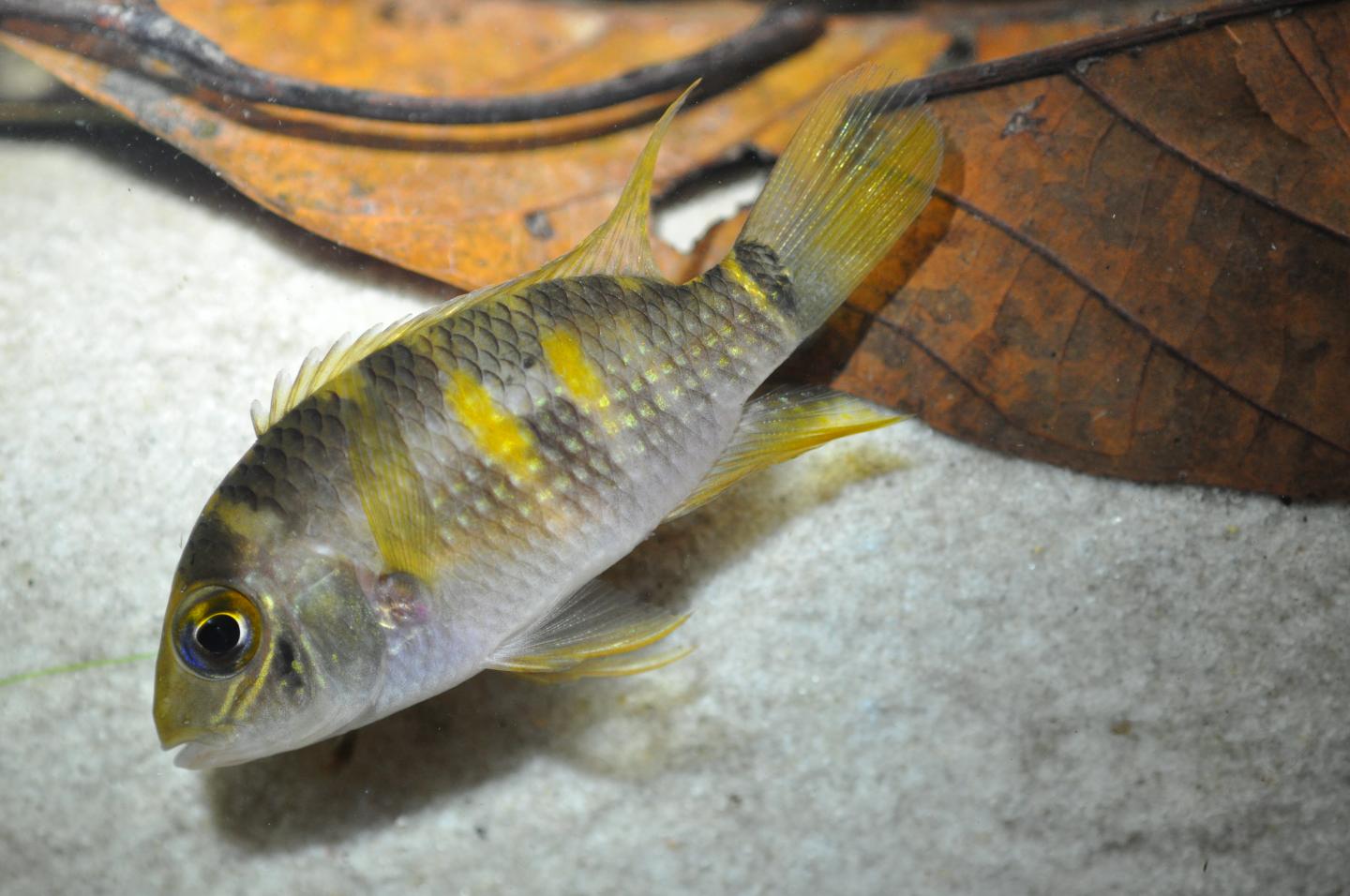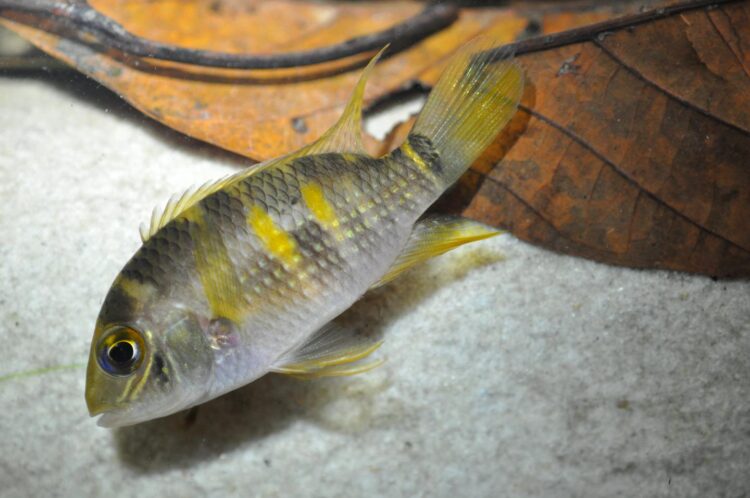Simulations using field data suggest focusing on the protection of species that live in rivers and lakes can be more efficient than the approach most used now, which focuses on terrestrial biodiversity.

Credit: Rafael Leita?o
A study published in Science on October 2 suggests that prioritizing aquatic environments in conservation programs for the Amazon region can be up to six times more efficient than focusing on the protection of terrestrial species, as is usual.
The conclusion is based on simulations using georeferenced field data on species diversity, weather and topography, among other things. The simulations enabled the researchers to identify the most important areas for the conservation of each group of species.
When conservation planning focuses on terrestrial species, they found, the protection achieved for aquatic species is only 22% of that obtained for terrestrial species, whereas when it focuses on the animals that inhabit rivers and lakes, the benefits reach 84% of the protection for species that live on land for the same financial cost.
The study was supported by São Paulo Research Foundation – FAPESP and led by researchers at the University of São Paulo’s Luiz de Queiroz College of Agriculture (ESALQ-USP) in Brazil and Lancaster University in the UK.
“We know more about terrestrial species and so they end up influencing the choice of priority areas for conservation. It’s assumed that aquatic biodiversity will benefit to the same extent. We set out to see whether this was so, given the considerable differences between the two environments. We concluded that it wasn’t and that prioritizing terrestrial biodiversity doesn’t guarantee the same degree of protection for aquatic biodiversity,” said Cecília Gontijo Leal, first author of the article. The study was conducted while she was on a postdoctoral research internship at ESALQ-USP with a scholarship from São Paulo Research Foundation – FAPESP.
Beyond land and water
In preparing the simulations, the group analyzed data for 1,500 terrestrial species (plants, birds, and beetles) and aquatic species (fish, dragonflies, other insects) collected in 377 localities and 99 forest river channels (igarapés) in Paragominas and Santarém, Pará state. In these two municipalities, more than 40% of the forest cover has been cleared to make way for agricultural activities.
The analysis started from the assumption that aquatic environments are not isolated but interconnected, as water permeates terrestrial ecosystems and transports nutrients and species, as well as playing an important role in many ecological processes.
“Rivers are normally used as borders for conservation units, and catchment areas aren’t totally protected because they aren’t well-represented. Xingu Indigenous Park in the state of Mato Grosso is a classic case. The headwaters are outside the area of the park, and all the effects of deforestation, however distant, reach the indigenous communities and the biodiversity inhabiting the protected territory,” Leal said.
According to the researchers, the benefits can be six times greater when planning includes both aquatic and terrestrial biodiversity data, compared with the way it is done now. When no data is available, simply including connectivity as a factor at least doubles the efficiency of conservation. The group found that the change of approach to include connectivity alone would increase the benefits to aquatic species by 75%-100% in Paragominas and by 130%-175% in Santarém, practically without losses to terrestrial species and using the same amount of financial resources.
“Conservation planning is usually delimited by an area, or polygon, on which efforts will focus. This is typically based on knowledge of terrestrial biodiversity. In our study we analyzed a large amount of data and showed what should be obvious considering the importance of water in the region,” said Silvio Ferraz, a professor at ESALQ-USP, Leal’s postdoctoral research advisor and another co-author of the study.
“Especially in the Amazon, everything revolves around water. Nutrient, organic matter, and aquatic species all move on the surface. What we didn’t expect was that if conservation focused on aquatic fauna and on maintaining this movement there would be such a large gain compared with the benefit when focusing solely on terrestrial biodiversity,” Ferraz said.
Besides being more effective for biodiversity, the integrated approach has the advantage of costing the same amount. “What’s most important is integrated planning. It doesn’t cost more and doesn’t mean significant losses for terrestrial biodiversity. On the contrary,” Leal said. “Even in situations where the aquatic biodiversity data isn’t as plentiful as ours, just including aquatic connectivity makes delimitation of the area to be conserved much more intelligent, doubling the protection for aquatic species.”
Leal and Ferraz are members of the Sustainable Amazon Network (RAS), an initiative that has over 30 partner institutions in Brazil and elsewhere, with some 100 researchers and graduate students working together on science-based projects to strengthen sustainability in the region.
The group now plans to apply the approach to the entire Amazon region, compiling the available data. Extending the study area will reinforce the results and could serve as a guide to help prioritize areas for protection or even create new conservation units. The method could also be tested on other areas that are important to conservation outside the Amazon.
Freshwater ecosystems occupy less than 1% of Earth’s surface and correspond to only 0.01% of all the water on the planet. Yet they are home to some 10% of all known species, including a third of all vertebrates.
Since 1970, the populations of freshwater environments have dwindled by 83%, while terrestrial environments have lost 40%. More than 80% of the world’s freshwater fish species live in tropical regions including the Amazon.
###
About São Paulo Research Foundation (FAPESP)
The São Paulo Research Foundation (FAPESP) is a public institution with the mission of supporting scientific research in all fields of knowledge by awarding scholarships, fellowships and grants to investigators linked with higher education and research institutions in the State of São Paulo, Brazil. FAPESP is aware that the very best research can only be done by working with the best researchers internationally. Therefore, it has established partnerships with funding agencies, higher education, private companies, and research organizations in other countries known for the quality of their research and has been encouraging scientists funded by its grants to further develop their international collaboration. You can learn more about FAPESP at http://www.
Media Contact
Heloisa Reinert
[email protected]
Related Journal Article
http://dx.





